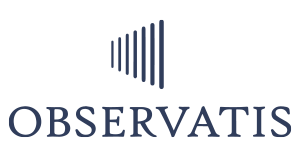Polish doesn’t fix what’s cracked underneath.
Perks without purpose don’t repair disengagement. True job satisfaction starts with autonomy, clarity, and feeling seen—far beyond surface-level benefits.
Satisfaction isn’t perks. It’s purpose
The Flawed Logic of Shallow Perks
Too many organizations still equate job satisfaction with surface-level perks—free lunches, ping pong tables, or “fun” Slack channels. But job satisfaction isn’t what surrounds the work. It’s how people feel about the work.
Disengaged employees don’t leave because of the break room—they leave because of unclear expectations, poor support, and lack of purpose.
From Ping Pong to Prediction
Traditional satisfaction surveys give you lagging indicators. Observatis delivers leading indicators—real-time signals from employees that reflect not just mood, but motivation and morale.
Observatis Redefines Job Satisfaction
We’ve embedded job satisfaction into a Happiness Index, powered by our ML model. Instead of one-off survey responses, we analyze a blend of behavioral signals, micro-feedback, and work sentiment across multiple dimensions:
Role Clarity
Recognition Frequency
Manager Support
Autonomy Level
Workload Fairness
Career Progress Visibility
This becomes a living model—updated daily and alerting leaders to brewing dissatisfaction long before it shows up in exit interviews.
Why It Matters?
Job satisfaction isn’t just about keeping employees happy—it’s about enabling performance, reducing turnover, and protecting culture.
Employees who feel supported, recognized, and aligned with their roles are more resilient, more productive, and more likely to stay. On the flip side, unclear roles, imbalanced workloads, and lack of recognition silently fuel disengagement—long before the resignation letter lands.
Leaders can’t afford to manage satisfaction retroactively.
By shifting from reactive surveys to real-time diagnostics, organizations gain the visibility needed to intervene early—where it matters most. In today’s high-turnover landscape, proactive satisfaction intelligence isn’t just nice to have. It’s mission critical.


Emerging Scientific Insights
According to Harvard Business Review, the top 3 predictors of job satisfaction are:
1. Feeling that your work is meaningful
2. Having autonomy
3. A strong sense of progress in your role
A recent study by the University of Oxford found that happy employees are 13% more productive, and that satisfaction is strongly correlated with manager quality and development clarity—not perks.
Pioneers Lighting the Path
Organizations like Salesforce, Cisco, and Cleveland Clinic have moved away from traditional satisfaction surveys toward continuous sentiment analytics—replacing annual engagement events with daily nudges, feedback loops, and well-being dashboards.
Industry Signals from Recent research
Gallup (2023): Only 23% of employees worldwide are engaged at work. Superficial perks have little to no impact on long-term satisfaction—clarity of role, development, and recognition matter more.
NIH (2022 Study – Work Satisfaction and Organizational Culture): Positive job satisfaction correlates directly with improved mental health, lower burnout, and greater organizational commitment—especially in healthcare and high-stress industries.
PwC’s Future of Work Report (2023): Employees who see clear pathways for growth are 2.5x more likely to stay with their employer—even when offered higher pay elsewhere.
APA’s Work and Wellbeing Survey (2022): Over 91% of employees say feeling valued is the #1 driver of job satisfaction. Only 38% believe their current employer does a good job of showing appreciation.
MIT Sloan Management Review (2023): The top drivers of satisfaction are respectful treatment, supportive leadership, and work-life alignment—not perks like free food or trendy office layouts.
Your Job Satisfaction Activation Plan
Phase 1: Quick Wins (30-Day Sprint)
- Launch a 3-question pulse around clarity, workload, and recognition.
2. Embed 1-on-1 check-in prompts in your manager tools—aligned to satisfaction drivers.
3. Deploy a “Workload Fairness” flash survey in your most stressed teams.
4. Publish a Job Satisfaction Snapshot for leadership with hotspots by department.
5. Open an anonymous feedback channel tied to autonomy and support.
Phase 2: Strategic Momentum (3–12 Months)
- Integrate Observatis Happiness Index into HR dashboards and EX scorecards.
2. Map Career Visibility Gaps by job level or tenure group.
3. Train frontline managers on reading and responding to satisfaction data.
4. Align Rewards and Recognition systems with your real-time feedback themes.
5. Model the ROI of satisfaction improvements—show the cost of staying reactive.
Wondering how job satisfaction truly shows up in your org—beyond perks?
We’re helping leaders decode stress, meaning, and morale across teams with live signals—not outdated pulse checks.
Let’s explore how you could surface real-time satisfaction insights from your workforce, mapped to real impact.
References & Credits
Gallup. State of the Global Workplace Report, 2023
NIH – National Library of Medicine. Job Satisfaction and Employee Wellbeing: Longitudinal Study
PwC. Future of Work and Employee Retention Trends, 2023
American Psychological Association. Work and Wellbeing Survey, 2022
MIT Sloan Management Review. The Real Drivers of Job Satisfaction, 2023
- Observatis ML Models & Data Frameworks (2024), internal IP documentation.





Anonymous
We’ve learned the hard way that surface-level engagement doesn’t move the needle on retention.
Anonymous
Measuring happiness in real-time could’ve helped us earlier.
Anonymous
Love how Observatis treats satisfaction as dynamic, not static. The Happiness Index concept has huge potential—especially when tied to turnover forecasting.
Anonymous
We’ve seen performance hold steady even when job satisfaction quietly declines. By the time burnout surfaces, it’s already too late. Can the framework help prevent that spiral.
Anonymous
The link between personal efficacy and satisfaction is often overlooked. This approach makes it measurable—and that’s a major win for OD teams
Anonymous
We’ve started measuring job stress and satisfaction separately, and the differences are eye-opening. Combining them into a Happiness Index would be a game changer.
Anonymous
This article speaks directly to what I hear in client orgs: leaders are unsure how to really measure satisfaction.